Choosing the right cat can feel overwhelming for many families. Ragdoll kittens capture hearts with their stunning blue eyes, soft fur, and gentle personalities. But are these fluffy companions worth the investment? This guide reveals seven essential facts about Ragdoll cats that will help you decide if one belongs in your home.
Key Takeaways
Ragdoll kittens cost $3,000 to $5,000 in 2025, with premium cats reaching $7,000. MoonSeed Ragdolls in Ohio charges $4,500 to $4,800, while RedEcho Ragdolls in North Carolina lists prices from $2,500 to $7,500.
These cats face a 30% risk of Hypertrophic Cardiomyopathy (HCM). They need annual heart ultrasounds starting at age two. Regular care includes twice-weekly brushing, nail trimming every 14 days, and professional grooming every three months.
Ragdolls require a diet with over 50% protein and less than 20% fat. Feed them 85 grams of wet food daily plus dry kibble. Avoid rice, corn, wheat, and soya to prevent obesity and health problems.
These gentle cats learn quickly and show remarkable intelligence. They adapt well to families with children and other pets. Their trusting nature means they must live indoors for safety.
Table of Contents
Benefits of Owning a Ragdoll Kitten

Ragdoll kittens bring pure joy to any household. Their calm nature and beautiful blue eyes make them wonderful companions. These fluffy friends fit perfectly into family life, whether you’re new to cats or have owned them for years.
What makes Ragdoll kittens loving and affectionate?
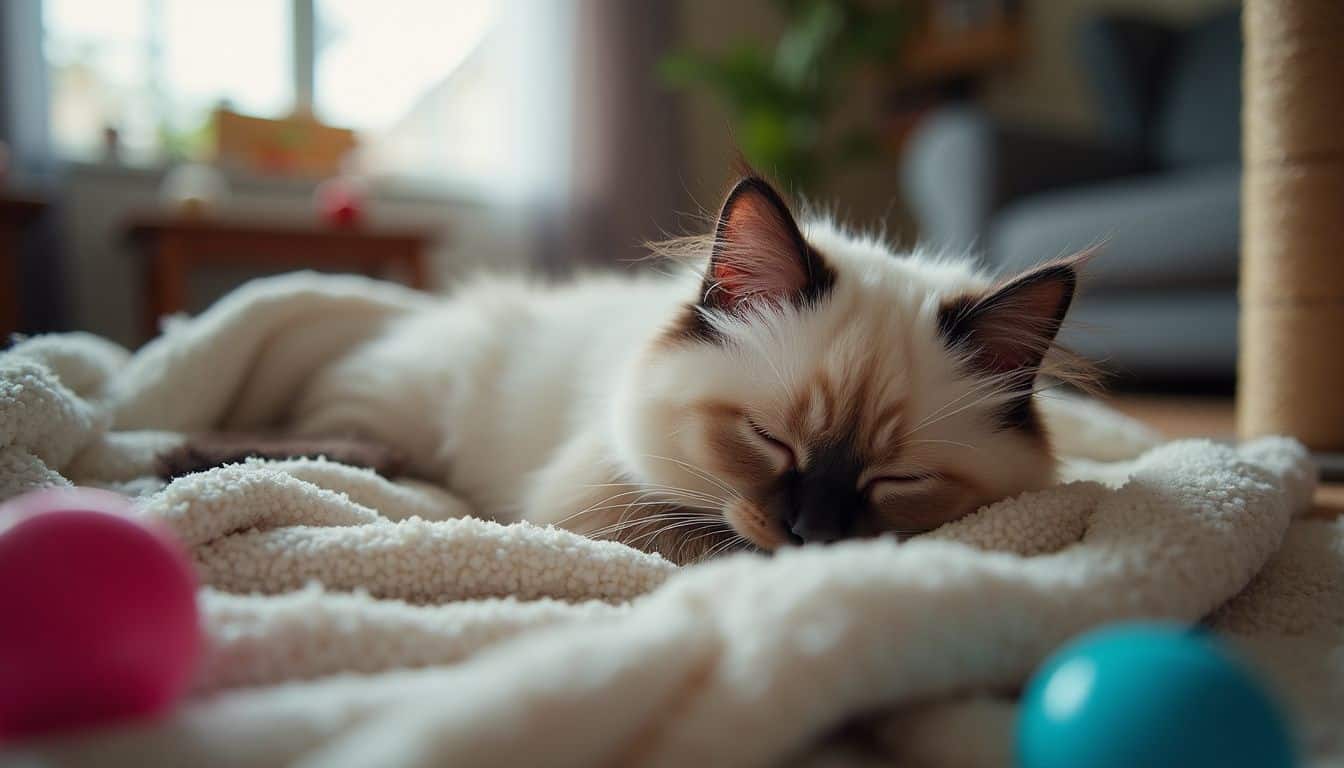
Ragdoll cats earned their name from a special trait: they go completely limp when picked up, just like a doll. Adorable Ragdoll kittens for sale now show this unique behavior from a young age, making them an instant delight for any cat lover.
These cats act more like dogs than typical cats. They greet you at the door after work. They follow you from room to room throughout the day. Their loving nature creates deep bonds with family members. Multiple-pet households work well for these social cats because of their patient personality.
A Ragdoll’s love language is physical touch and constant companionship – Dr. Sarah Miller, Feline Behavior Specialist
Careful breeding created this affectionate personality over many generations. Ragdolls need more human interaction than most cats. They hate being alone for long periods. Many owners notice their cats waiting at windows before they arrive home.
These traits make Ragdolls perfect as emotional support animals. New family members quickly win their trust. Aggressive behavior rarely occurs with this breed. Children especially love these patient cats. Their gentle nature makes them ideal family pets for homes with kids.
Now that you understand their loving nature, let’s look at their intelligence.
How intelligent and easy to train are Ragdoll kittens?

Ragdoll kittens rank among the smartest cat breeds you can own. Their quick learning abilities surprise many first-time owners. These cats master commands much faster than typical house cats.
Clicker training works wonderfully with this breed. They learn tricks like fetch, sit, and lie down within days. Some Ragdolls even master high-fives and other complex behaviors. Their natural curiosity makes training sessions fun for both cat and owner.
Positive reinforcement brings the best results with these smart cats. Starting training during kittenhood creates lifelong good habits. Their gentle nature shows through body language during lessons. Trust and comfort guide every interaction. Busy families find these cats perfect for interactive play and training.
Regular playtime strengthens your bond while reinforcing learned behaviors. Intelligence combined with a calm temperament creates ideal training conditions. Success comes easily with these eager-to-please cats.
Are Ragdoll kittens good with children and other pets?
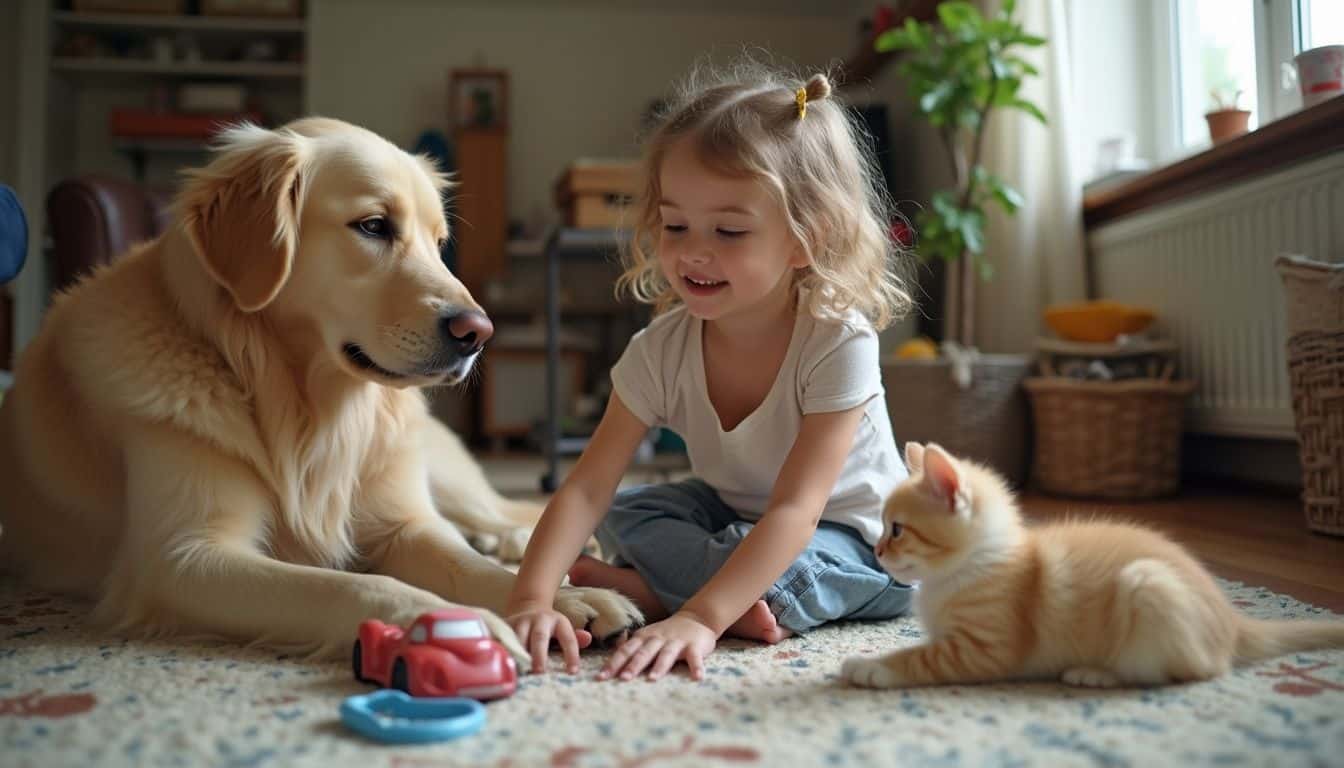
Smart and trainable Ragdolls shine in family settings. Their kid-friendly nature makes them perfect for homes with children of all ages. Patient personalities help them handle excited kids without stress or fear.
These cats rarely scratch or bite during playtime. Remarkable tolerance defines their interactions with young children. Multi-pet households benefit from their social traits too. Ragdolls get along well with dogs, other cats, and various household pets.
Their calm energy matches family routines perfectly. Yet their playful spirit creates fun moments throughout the day. Indoor living keeps these trusting cats safe from outdoor dangers. A home with two kids and a dog proved perfect for my own Ragdoll kitten. She adapted within days and became everyone’s best friend.
How much grooming do Ragdoll kittens require?
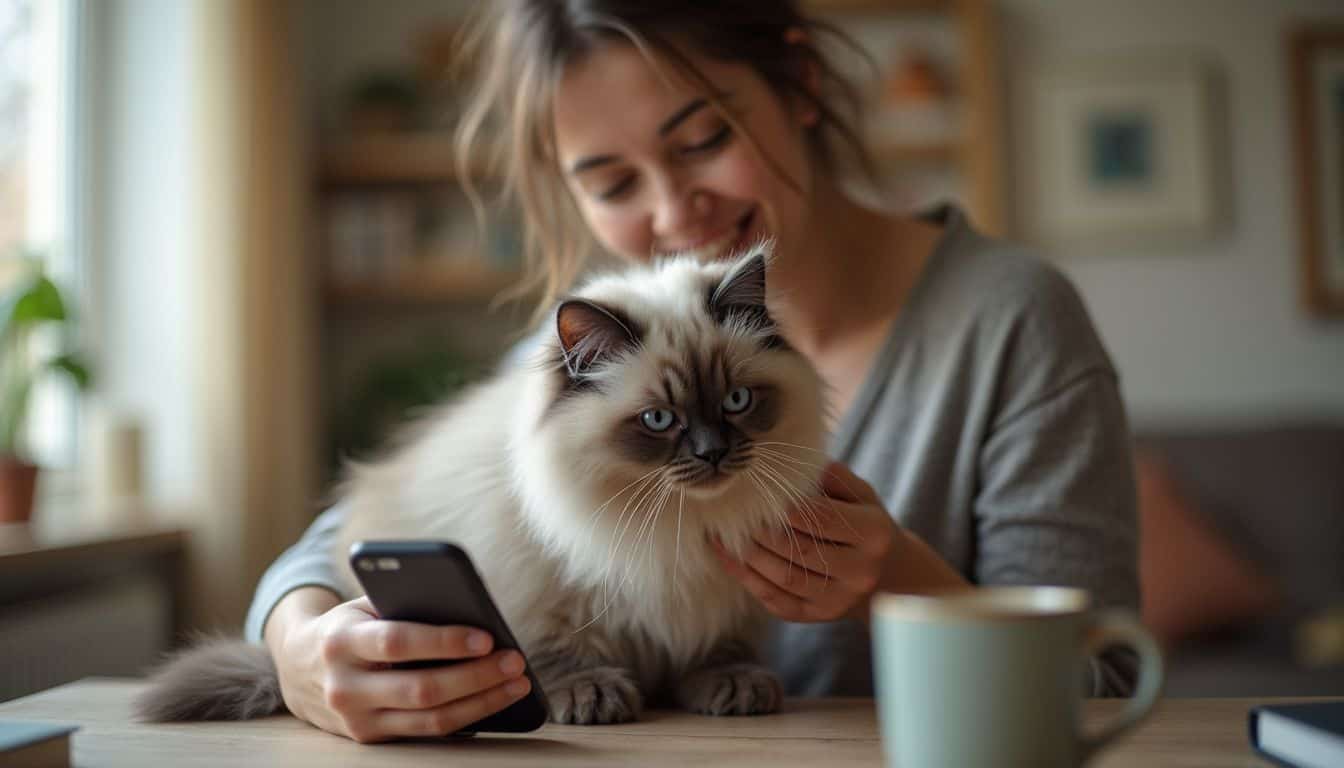
Ragdoll kittens need regular grooming to maintain their beautiful silky coats. Brush their semi-long fur once or twice weekly. This prevents painful tangles and matting. The good news? They lack an undercoat, which means less shedding than other long-haired breeds. Less fur also means fewer allergens in your home.
Professional grooming every three months helps as kittens grow into adults. Their coat changes texture during this time. Extra care keeps it healthy and beautiful.
Early grooming habits create happy, well-adjusted Ragdolls for life.
Basic care goes beyond brushing. Trim nails every two weeks to prevent scratching. Check ears weekly for dirt or wax buildup. Spring brings extra shedding, so increase brushing during this season. Fall shedding happens too, though less dramatically.
Dental care matters for these cats. Use cat-specific toothpaste and brushes. Regular grooming reduces hairballs significantly. Long-haired cats often struggle with this problem. Each grooming session strengthens your bond with your kitten. These moments become special time together.
Challenges of Owning a Ragdoll Kitten
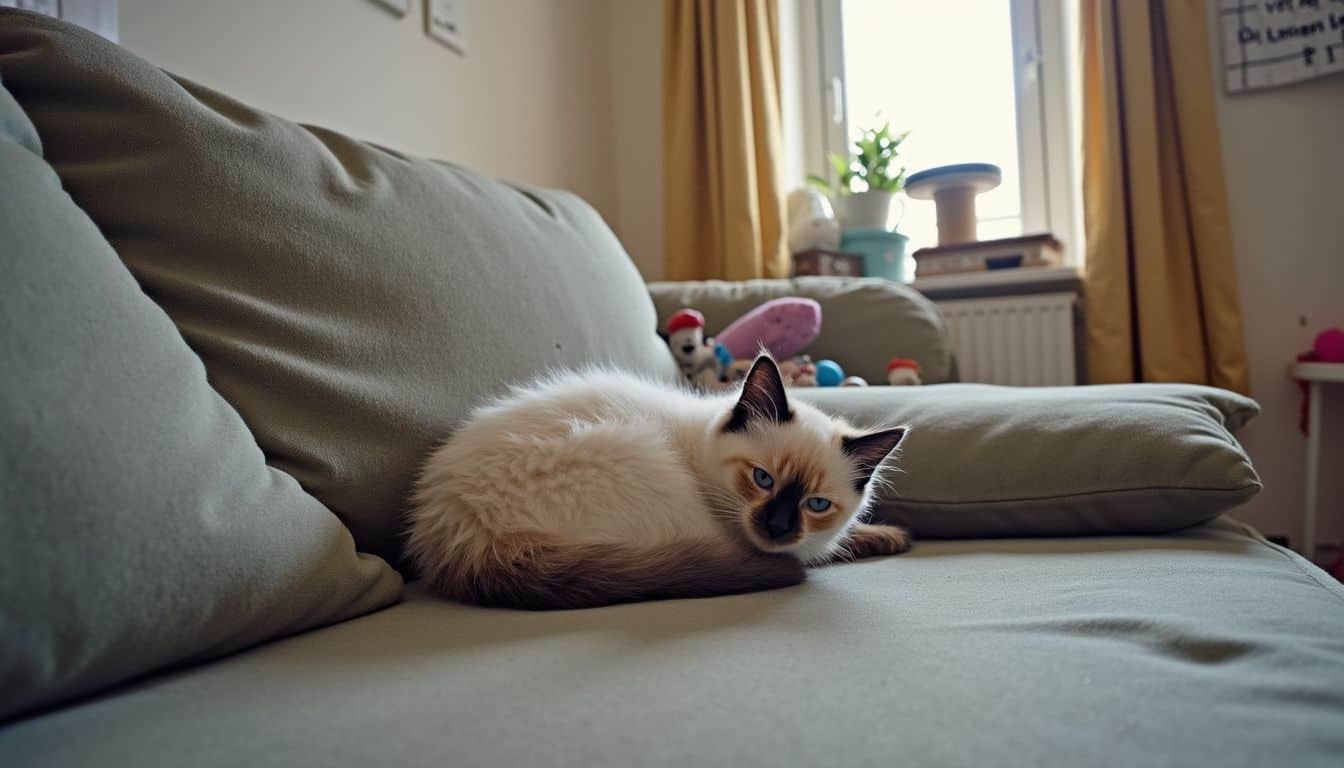
Ragdoll kittens bring unique challenges alongside their charm. Health concerns like hypertrophic cardiomyopathy affect many in this breed. High purchase prices from reputable breeders might stretch your budget. Read on to understand if these gentle giants fit your lifestyle and finances.
Why do Ragdoll kittens have a high initial cost?

Quality Ragdoll kittens from trusted breeders cost between $3,000 and $5,000 in 2025. Premium specimens can reach $7,000 or more. These prices include extensive medical care before you take your kitten home. Spaying or neutering, vaccinations, deworming, and microchipping come standard.
Top catteries charge premium prices for good reasons. MoonSeed Ragdolls in Ohio asks $4,500 to $4,800 per kitten. RedEcho Ragdolls in North Carolina ranges from $2,500 to $7,500. Explore cost-effective alternatives for emotional support animals if these prices exceed your budget.
Professional breeders invest thousands in genetic testing. They screen for hereditary diseases like hypertrophic cardiomyopathy. Each kitten receives comprehensive healthcare from birth. This includes parasite prevention and 30-day health insurance coverage.
Show-quality kittens cost an extra $800 to $1,500. Their superior pedigree and appearance command higher prices. Bargain prices under $2,500 should raise red flags. Poor breeding practices often hide behind low prices. Future health problems could cost thousands more.
Years of cat ownership taught me an important lesson. Initial costs from reputable breeders save money long-term. Healthier, well-socialized pets need fewer medical visits later.
What hereditary health issues affect Ragdoll kittens?
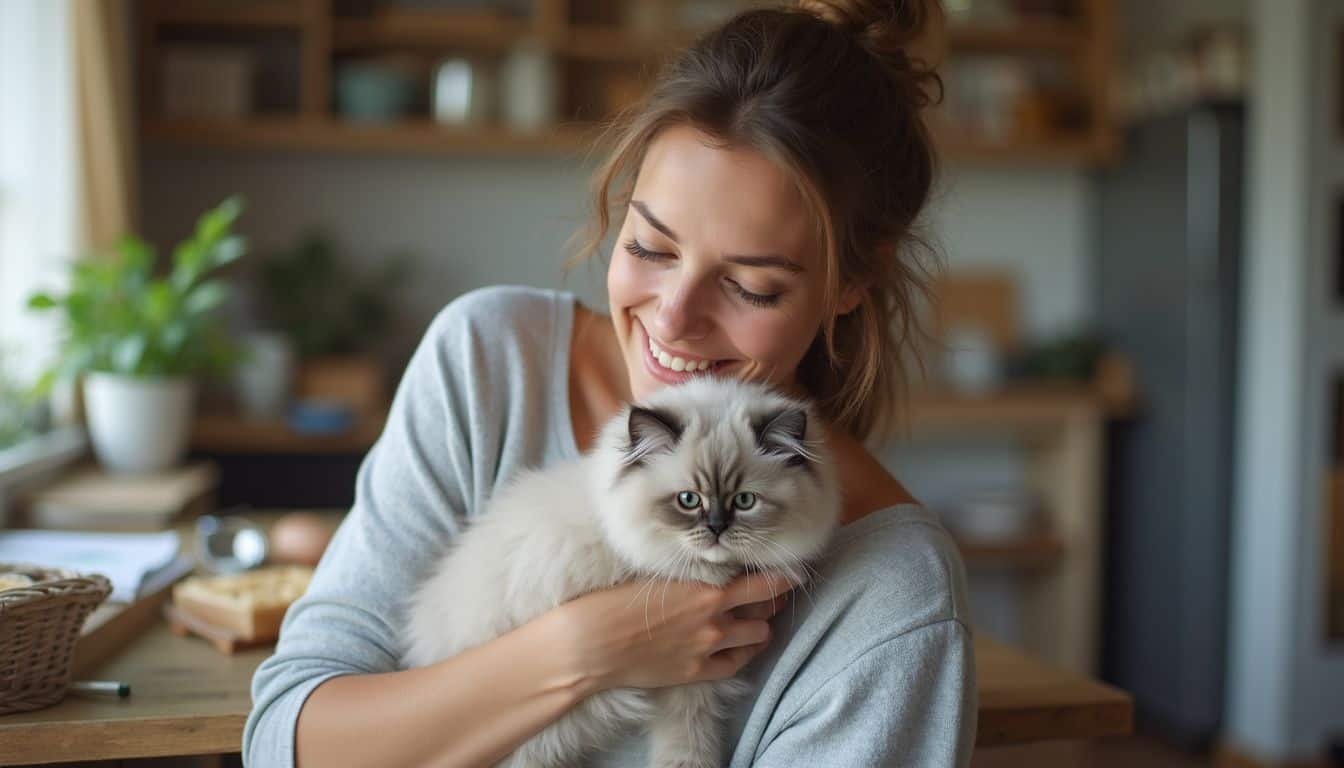
Ragdoll kittens face several genetic health challenges that require careful monitoring. About 30% carry a mutation linked to Hypertrophic Cardiomyopathy (HCM). This serious heart condition thickens the heart muscle over time.
Polycystic Kidney Disease also runs in Ragdoll bloodlines. A faulty gene causes cysts to form in the kidneys. These cysts eventually lead to kidney failure. Watch for increased thirst and sudden weight loss. These symptoms signal kidney problems.
Genetic testing helps spot these issues early in your kitten’s life. Many Ragdolls develop Feline Lower Urinary Tract Disease as they age. Bladder stones and urinary infections occur frequently in this breed.
Some breeders use inbreeding to achieve certain looks. This practice increases health risks significantly. DNA screening detects HCM before symptoms appear. Early warning signs include lethargy and breathing problems. Regular vet checkups catch these issues before they become life-threatening. Prevention beats treatment every time.
Why are Ragdoll kittens better suited for indoor living?

Indoor living protects Ragdoll kittens from serious outdoor dangers. These gentle cats lack essential survival instincts that keep other cats safe. Predators pose real threats to these trusting animals. One tragic story tells of Lily, a Ragdoll killed by a wolverine attack.
Their friendly nature creates another problem outdoors. Strangers can easily steal these beautiful, distinctive cats. Purebred Ragdolls attract thieves who sell them for profit.
Indoor environments shield these cats from diseases and parasites. Fleas, ticks, and worms stay outside where they belong. Indoor Ragdolls form closer relationships with their families too. They adapt perfectly to apartment and suburban home life. Most show zero interest in outdoor adventures.
Cat breeders and veterinary organizations agree on this point. Ragdolls must stay indoors to avoid injuries and prevent them from getting lost. Their trusting nature works against them in the outside world. The next section covers diet needs for your indoor Ragdoll.
How can obesity be prevented in Ragdoll kittens?
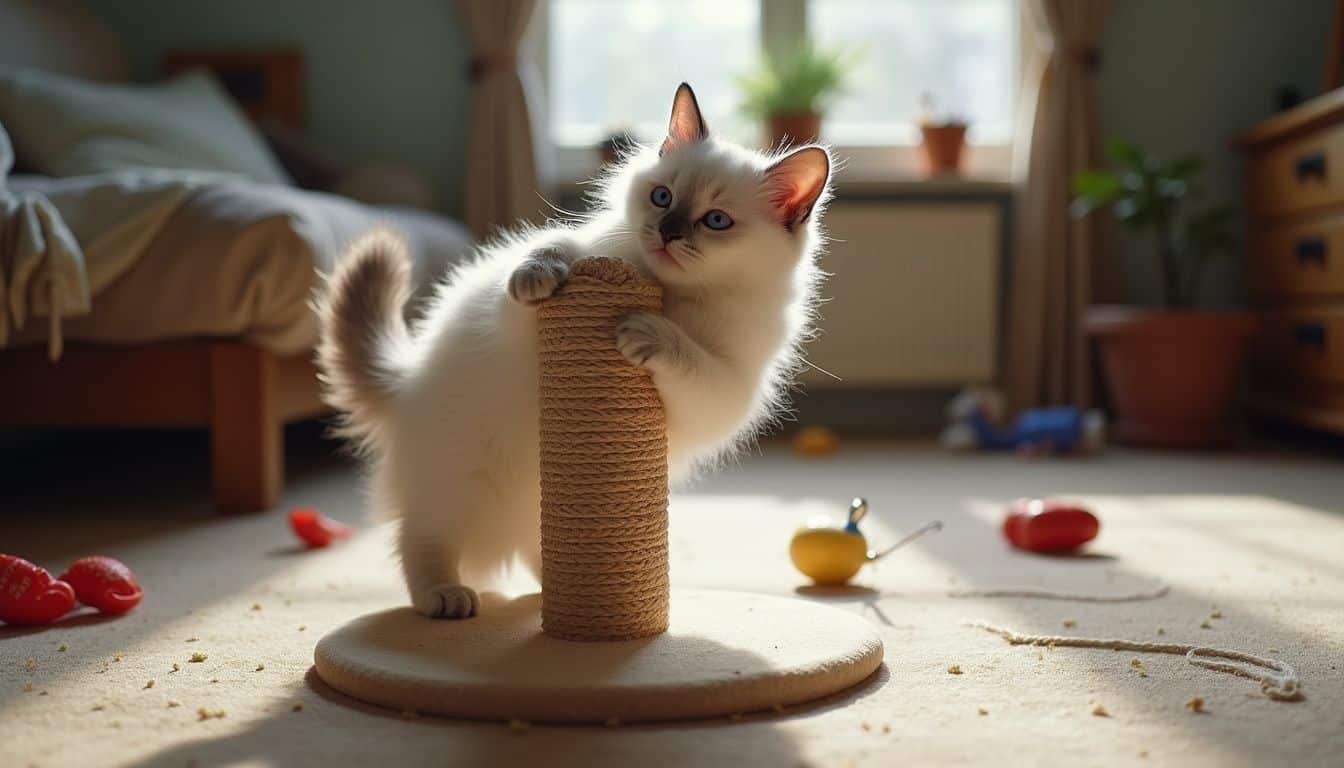
Indoor Ragdoll kittens face weight challenges without proper care. proper diet and exercise keep them healthy and active. These cats lack self-control around food, so strict portion control matters.
Feed your kitten a diet with over 50% protein and less than 20% fat. This balance supports healthy growth without excess weight gain. Schedule 20 minutes of daily exercise through interactive play. Use feather wands, laser pointers, or toy mice to get them moving.
A balanced diet with animal protein and regular exercise forms the foundation of a healthy Ragdoll kitten.
Food quality affects your Ragdoll’s weight directly. These cats need careful monitoring of their meals throughout life. Extra weight leads to diabetes, joint problems, and heart disease. Skip ingredients like rice, corn, wheat, and soya in their food. These fillers add empty calories without nutrition.
Choose high-quality commercial foods designed for indoor cats. Natural weight control happens with proper nutrition. Cat scratching posts encourage climbing and stretching exercises. Active play sessions build strong bonds while burning calories. Your kitten stays fit and happy with this balanced approach.
How to Care for a Ragdoll Kitten
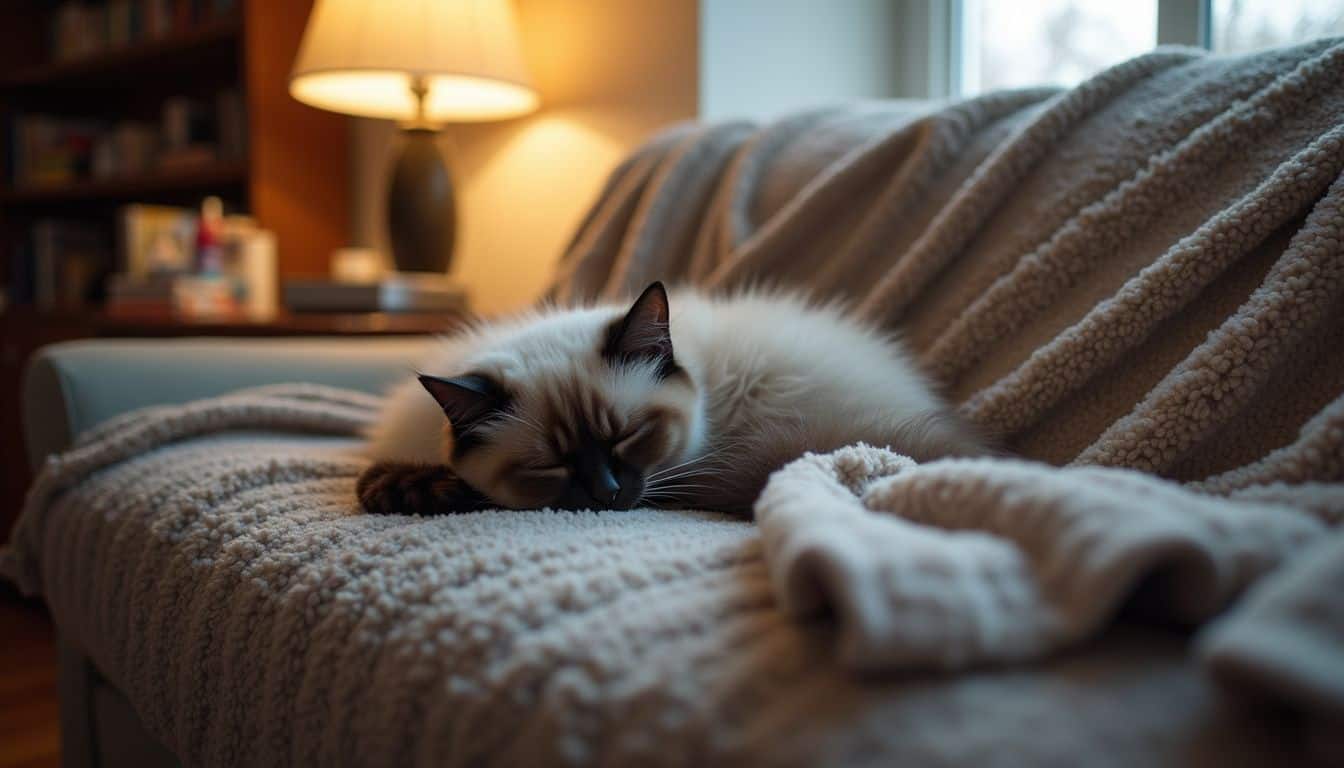
Ragdoll kittens thrive with specific care routines tailored to their needs. Proper nutrition, grooming, and medical care keep them healthy for years. A good care plan prevents common issues like heart disease and feline infectious peritonitis.
What is a balanced diet for a Ragdoll kitten?
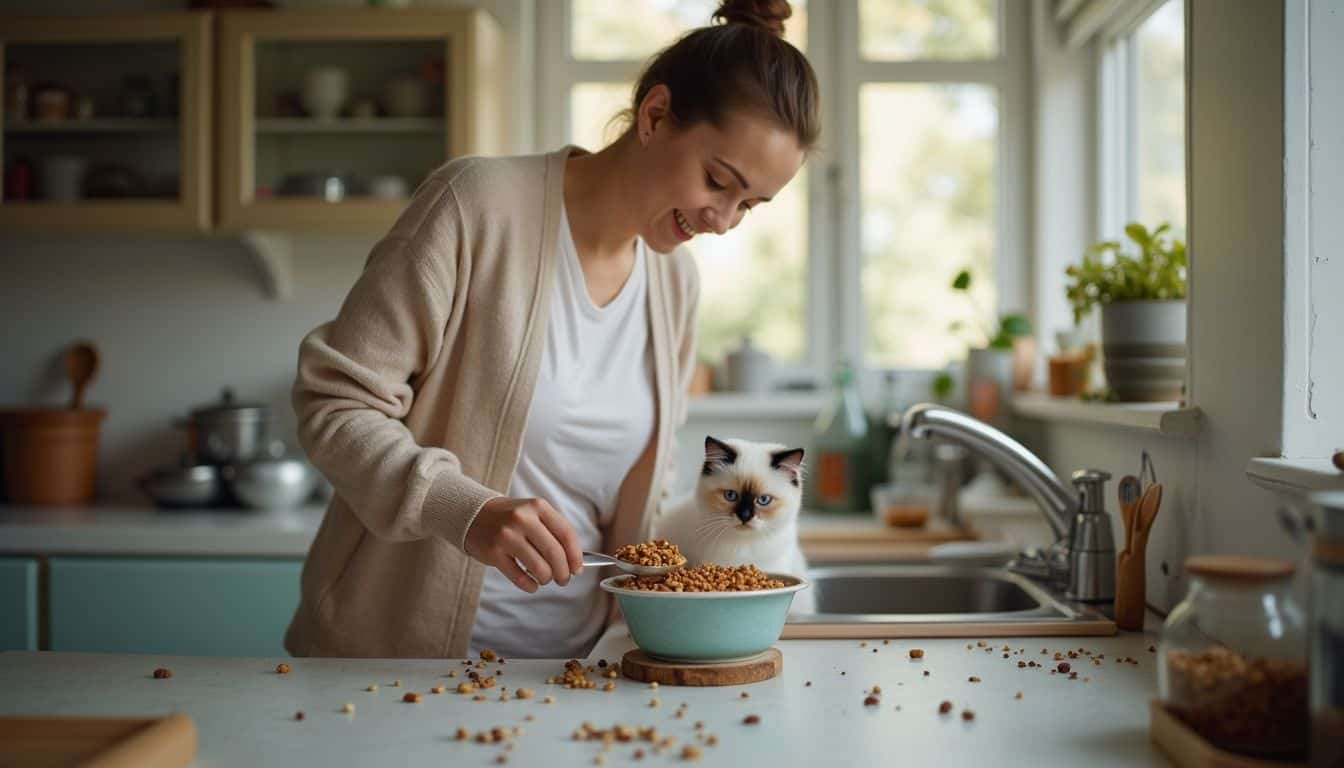
A balanced diet shapes your Ragdoll kitten’s growth and future health. Both wet and dry foods provide essential nutrients for proper development.
- Feed 85 grams of wet food daily along with high-quality dry kibble. This combination meets all nutritional needs.
- Animal protein should make up over 50% of the diet. Choose chicken, turkey, duck, and fish as main ingredients.
- Fresh meat provides essential amino acids like taurine and arginine. These nutrients support heart and eye health.
- Keep animal fat under 20% of total calories. Include omega-3 fatty acids for healthy skin and coat.
- Liver works as a natural multivitamin for growing kittens. It contains minerals they need for strong bones.
- Royal Canin and Purina Pro Plan offer balanced nutrition specifically for Ragdoll kittens.
- Limit fiber content to 3% or less. Too much fiber causes digestive problems.
- Salmon and mackerel provide healthy fats. These keep your kitten’s coat silky and shiny.
- Mix wet and dry food to prevent urinary issues. Ragdolls often develop these problems without enough moisture.
- Choose quality protein sources over artificial supplements. Real food beats synthetic vitamins.
- Fresh water must always be available. Change it daily to encourage drinking.
- Avoid table scraps and human food. These cause weight gain and nutritional imbalances.
How often should you groom a Ragdoll kitten?
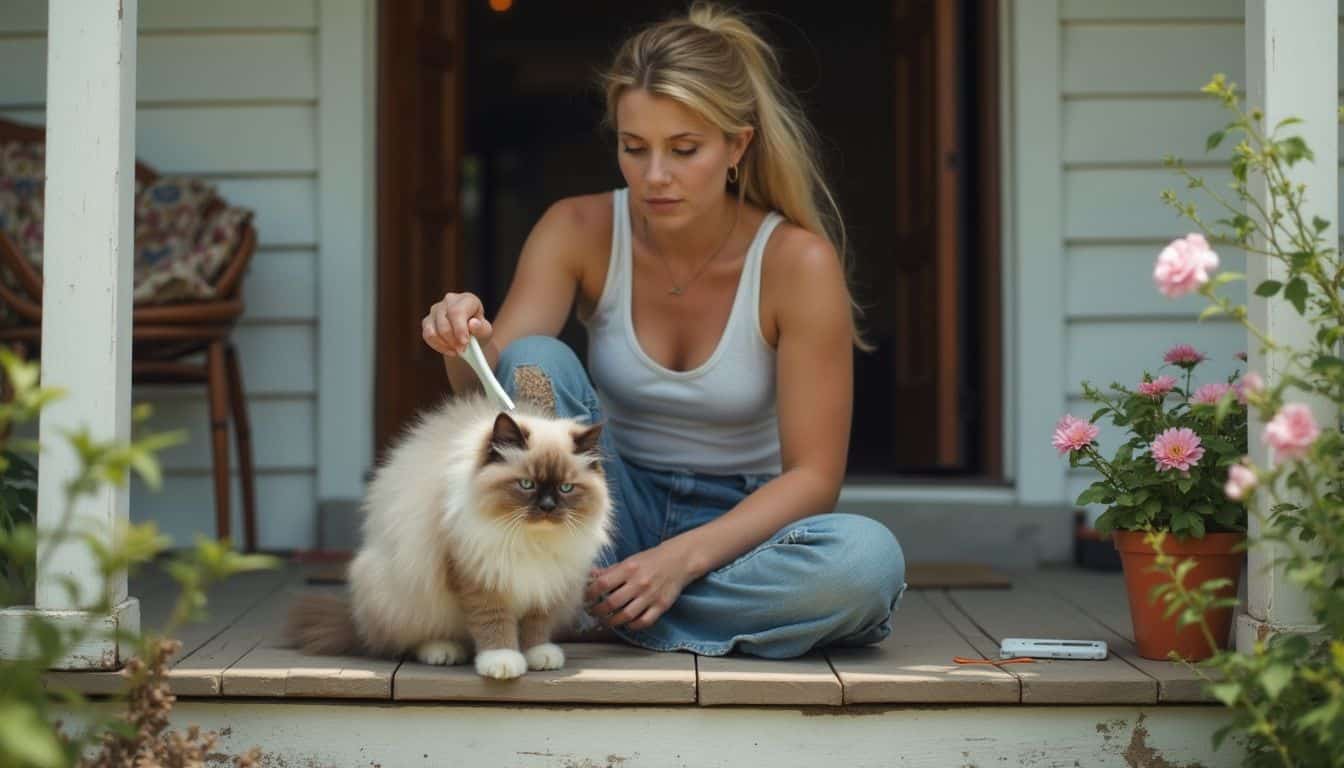 Proper grooming habits begin after establishing a healthy diet for your kitten. Regular grooming maintains coat health and prevents painful hairballs.
Proper grooming habits begin after establishing a healthy diet for your kitten. Regular grooming maintains coat health and prevents painful hairballs.
- Brush your Ragdoll kitten’s coat every two weeks using a soft bristle brush. Spring and fall need more frequent brushing due to seasonal shedding.
- Quick daily brushing sessions spread natural oils through the fur. These short sessions also create bonding moments.
- Use a wide-tooth stainless steel comb weekly for deep grooming. This reaches the undercoat effectively.
- Trim your kitten’s nails every 14 days. Sharp nails snag on furniture and can hurt during play.
- Schedule professional grooming visits every three months. Adult coats need expert care as they develop.
- Start grooming routines early to build positive associations. Kittens who enjoy grooming become easier adult cats.
- Give extra attention to grooming during seasonal changes. Temperature shifts trigger heavier shedding periods.
- Check for bumps, scratches, or skin problems during each session. Early detection prevents serious issues.
- Clean your kitten’s ears and eyes gently each week. Use damp cotton balls for safety.
- Store grooming tools in a clean, dry place. Dirty tools spread bacteria and cause infections.
- Reward your kitten with treats and praise during grooming. This builds trust and cooperation.
When should you schedule veterinary checkups for a Ragdoll kitten?
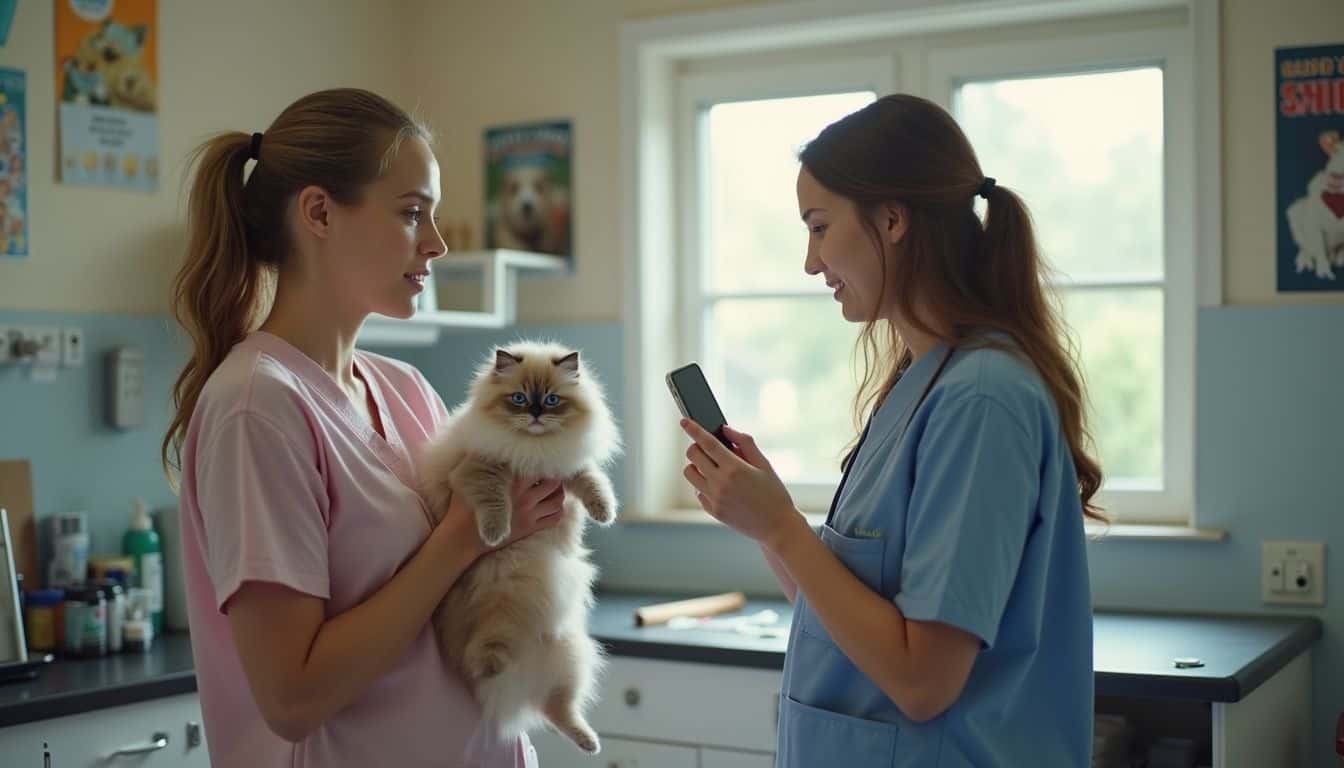
Regular grooming pairs perfectly with proper medical care for your Ragdoll. Each growth stage requires specific veterinary attention to maintain health.
- Schedule wellness checks every six months to track growth and catch problems early. These visits detect issues like blood in urine or urinary tract infections before symptoms worsen.
- Book annual heart ultrasounds starting at age two. Since 30% of Ragdolls carry an HCM gene mutation, early screening saves lives. These scans check for sudden cardiac death risks.
- Arrange dental checkups once yearly to prevent tooth and gum problems. Early detection stops painful dental disease.
- Perform weekly health inspections at home between vet visits. Monitor weight, skin condition, and eating habits for changes.
- Schedule blood work tests during annual checkups. These tests screen for common purebred Ragdoll health concerns before symptoms appear.
- Follow your vet’s vaccination schedule precisely. Ragdolls need protection against feline coronavirus and other diseases.
- Track weight at every vet visit to prevent obesity. Your vet can adjust feeding amounts and suggest exercise plans.
- Keep emergency vet contact information readily available. Quick response saves lives during health crises between regular checkups.
How Will Ragdoll Kitten Ownership Trends Evolve in 2025?
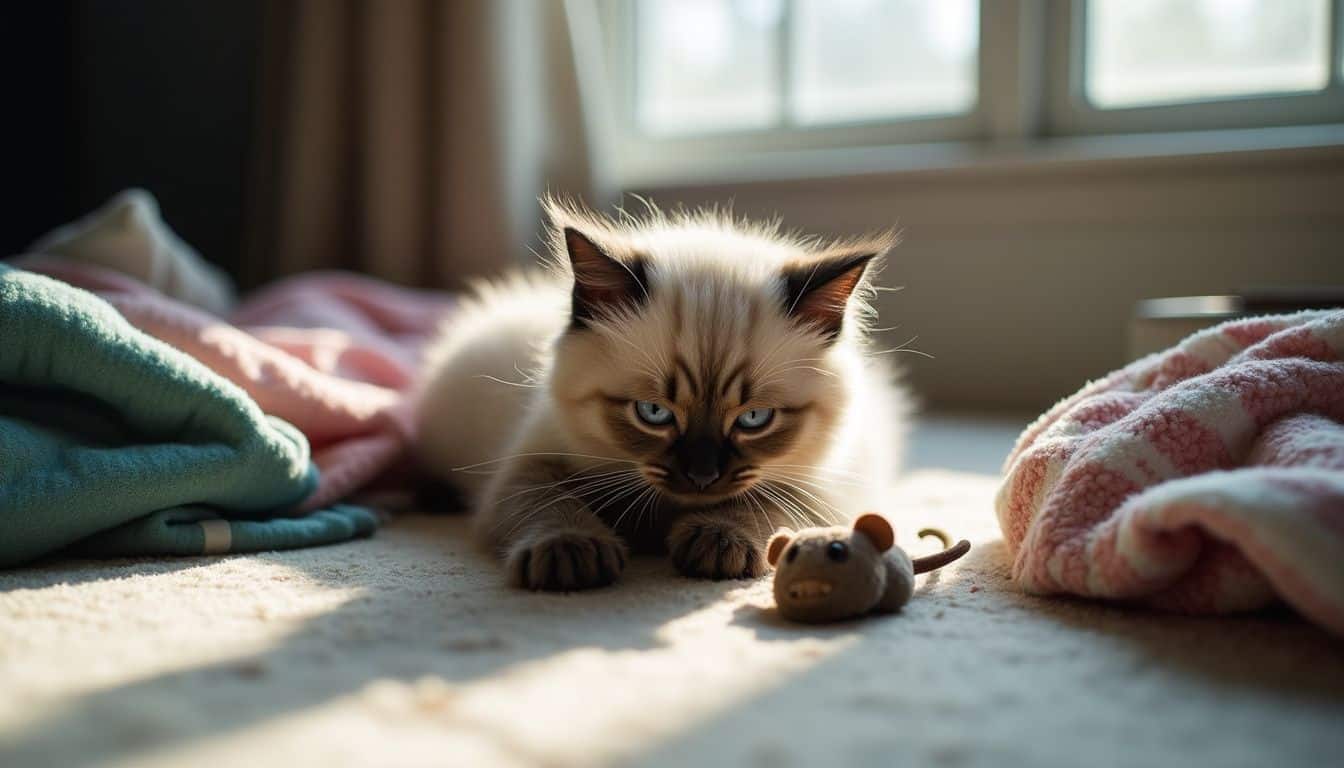 Ragdoll kitten prices will range from $1,000 to $2,500 in 2025. Breeder reputation and coat patterns determine the final cost. Social media platforms like Pinterest and Instagram continue driving demand for these pure bred cats. Beautiful photos and videos showcase their gentle personalities daily.
Ragdoll kitten prices will range from $1,000 to $2,500 in 2025. Breeder reputation and coat patterns determine the final cost. Social media platforms like Pinterest and Instagram continue driving demand for these pure bred cats. Beautiful photos and videos showcase their gentle personalities daily.
More buyers now demand proof of health testing from breeders. Trusted breeders who test for health issues gain loyal customers. Hypertrophic Cardiomyopathy screening becomes standard practice. Smart buyers ask for genetic test results before purchasing.
Rescue organizations offer budget-friendly adoption options for Ragdoll lovers. These adoptions include spaying or neutering and vaccinations. The total cost stays much lower than buying from breeders. Many families choose this path to find their perfect companion.
Bicolor and lynx point patterns remain the most popular choices. Buyers love these striking coat variations. Reputable breeders maintain strict health standards through DNA testing. This ensures healthy kittens for families across the country. The breed’s popularity shows no signs of slowing down.
People Also Ask
Are Ragdoll cats hypoallergenic?
No, Ragdoll cats are not hypoallergenic. People with cat allergies might still react to their fur and dander, despite their silky coat. Always spend time with a Ragdoll before bringing one home.
What is special about a Ragdoll’s personality?
Ragdoll cats have a gentle, affectionate personality. They often follow their owners around, enjoy being held, and adapt well to family life. Their soft meow and calm nature make them excellent indoor companions.
How should I feed my Ragdoll kitten?
Ragdoll kittens need cat food rich in essential nutrients, vitamins and minerals, and essential fatty acids. Their diet should include proper amounts of protein, carbohydrates, and fiber to support healthy growth.
What health issues should I watch for in Ragdoll cats?
Watch for signs of FLUTD (Feline Lower Urinary Tract Disease), including frequent urinating or blood in the urine. Regular vet checks help prevent issues with their urethra and overall health.
How do I find a reputable Ragdoll breeder?
Avoid backyard breeders and look for TICA-registered professionals. Legitimate breeders will provide health certificates, show you the kitten’s parents, and answer questions about lynx points or other color variations. They prioritize the cats’ welfare over quick sales.
References
https://www.petplan.co.uk/cat-insurance/cat-breeds/ragdoll.html
https://www.fitbark.com/blog/7-things-to-know-before-getting-a-ragdoll-cat
https://www.pumpkin.care/blog/ragdoll-cats-facts/ (2025-07-29)
https://ragsandfluff.com/home/f/why-ragdolls-are-expensive
https://potiki.com.au/blog/health-problems-in-ragdoll-cats/
https://www.theenvironmentalblog.org/2025/02/why-ragdoll-kittens-are-the-best-choice-for-first-time-cat-owners-in-nj/ (2025-02-27)
https://untamed.com/blogs/cat-breeds/pros-and-cons-of-ragdoll-cats (2022-05-19)
https://www.facebook.com/groups/686510075163293/posts/2086294795184807/
https://www.pastelragdolls.com/blog/choosing-the-best-food-for-your-ragdoll-feline-diet-guide
https://poshraggies.com/blog/how-to-prepare-for-a-ragdoll-kitten/ (2025-02-23)
https://ragdolllove.com/health-inspection-tips-for-your-ragdoll-cat/ (2020-05-27)
https://petruvo.com/how-much-are-ragdoll-cats-in-2025-your-best-guide/ (2025-05-20)
